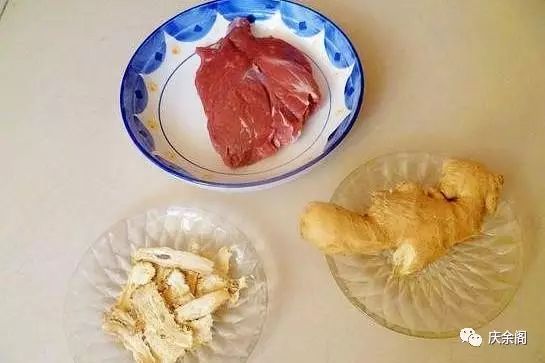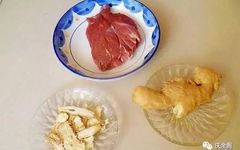How to Diagnose Diseases Associated with Deep Pulse?
The deep pulse (chen mai) does not exist in isolation; it generally combines with other pulse types, indicating different states. Overall, it can be summarized as:
Deep pulse indicates water retention and yin deficiency diseases, with rapid heat or slow cold and phlegm. Weak and deep suggests deficiency of qi, while deep with qi stagnation and cold indicates accumulation.
According to the twelve meridians, the deep pulse is certainly found in the three yin meridians: either the Taiyin (太阴) lung (fei), spleen (pi), or the Shaoyin (少阴) heart (xin), kidney (shen), or the Jueyin (厥阴) liver (gan), pericardium (xin bao). The combination with rapid or slow pulses can help determine the cold-heat nature of the disease, but these are not absolute; the relationship between rapid/slow and cold/heat is a general correspondence.
A weak deep pulse generally indicates a manifestation of qi and blood deficiency or qi stagnation; if the deep pulse is strong or feels obstructive, it suggests cold or the presence of a mass.
Deep pulse can be categorized by location:
-
Deep Pulse at the Cun Position
Deep pulse at the cun position typically refers to the right cun, indicating water retention in the chest. Li Shizhen stated:
“Cun deep indicates phlegm stagnation and water retention in the chest.”
The cun position also has left and right differences; a deep pulse at the right cun indicates a problem in the chest. However, if the left cun pulse is normal, it indicates a healthy state. If the pulse shape is slightly abnormal, such as serpentine or thin like a wire, it may indicate modern cerebrovascular issues, which require attention. To assess water retention in the chest, for example, in the “Shang Han Lun”:
“Question: What are the symptoms of chest obstruction and organ blockage? Answer: Pain upon palpation, floating cun pulse, and deep guan pulse, known as chest obstruction. What is organ blockage? Answer: Similar to chest obstruction, normal appetite, occasional diarrhea, floating cun pulse, and small, tight, deep guan pulse, known as organ blockage. A white, slippery tongue coating is difficult to treat. Organ blockage has no yang symptoms, does not alternate between cold and heat, and the person is generally quiet; a slippery tongue coating indicates it should not be purged. If the disease arises from yang and is purged too early, it leads to chest obstruction; if it arises from yin and is purged, it leads to distension. Therefore, chest obstruction occurs due to purging too early.”
For chest obstruction, the treatment is as follows:
Da Huang (Rhubarb) (250g), Ting Li Zi (Descurainia Seed) (250ml, decocted), Mang Xiao (Mirabilite) (250ml), Xing Ren (Apricot Kernel) (250ml, peeled and roasted).
Combine the four ingredients, crush and sift two of them, add Xing Ren and Mang Xiao, grind into a paste, and form into pills. Mix with 10g of Gan Sui powder and 200g of honey, boil with 2 liters of water until 1 liter remains. Take warm, and if not effective after one night, take again. Follow the medication guidelines.
Here, the deep guan pulse indicates phlegm and fluid stagnation in the chest, which corresponds to modern diseases like pleural effusion. Therefore, sometimes a deep pulse also represents internal water retention.
-
Deep Pulse at the Guan Position
True deep guan pulse has different implications:
“Guan indicates central cold pain and obstruction.”
Deep guan pulse can be divided into left and right; the left guan indicates liver issues. Disharmony between liver and spleen can lead to abdominal pain or stomach pain, such as in the case of Dang Gui (Angelica Sinensis) Lamb Ginger Soup:
“Cold hernia abdominal pain and hypochondriac pain, for urgent pain inside, use Dang Gui Sheng Jiang Yang Rou Tang.”
Dang Gui Sheng Jiang Yang Rou Tang Recipe:
Dang Gui (3 liang), Sheng Jiang (5 liang), Yang Rou (1 jin).
Combine the three ingredients with 8 liters of water, boil to 3 liters, take 7 he (about 1.5 liters) warm, three times a day. If cold is excessive, add more ginger; if pain is severe and causes vomiting, add 2 liang of Chen Pi (Tangerine Peel) and 2 liang of Bai Zhu (White Atractylodes). If adding ginger, also add 5 liters of water, boil to 3 liters, and take 2 he.
In Dang Gui Sheng Jiang Yang Rou Tang, Dang Gui nourishes liver blood, Sheng Jiang dispels cold, and Yang Rou tonifies the body, making it an excellent treatment for abdominal pain, especially effective for liver blood deficiency abdominal pain. If qi stagnation is evident, Chen Pi can be added to regulate qi. This formula is also well-known for treating women’s dysmenorrhea and is a famous health tonic.

Dang Gui Sheng Jiang Yang Rou
If the right guan pulse is present, it indicates spleen yang deficiency, with internal cold sinking, as in the case of Da Jian Zhong Tang:
“Severe cold pain in the chest, inability to eat or drink, abdominal cold, with skin rising, pain above and below that cannot be touched, use Da Jian Zhong Tang.”
Da Jian Zhong Tang Recipe:
Shu Jiao (2 liang, sweat removed), Gan Jiang (4 liang), Ren Shen (2 liang).
Combine the three ingredients with 4 liters of water, boil to 2 liters, remove the dregs, add 1 liter of honey, simmer to 1.5 liters. Divide and take warm; if within a short time, you can drink 2 liters of porridge, then take again, aiming for a day of soft food, warm and covered.
Da Jian Zhong Tang is frequently used for treating abdominal pain, characterized by cold and deficiency, so this type of abdominal pain generally also presents with a deep and weak pulse, with pain relieved by pressure.
-
Deep Pulse at the Chi Position Requires Detailed Analysis, Common in Kidney Diseases
“Chi position indicates turbid retention and diarrhea, kidney deficiency affecting the lower back and lower source.”
Deep pulse at the chi position is very common; as long as there is no obvious deep pulse, it is generally not considered a major issue. However, if there is a sinking deep pulse or if the deep pulse combines with other pulse types, it indicates a more significant problem. For example, a deep pulse at the chi position with no root is difficult to feel, generally indicating extreme kidney qi deficiency. Many women with uterine atrophy present this pulse, which is hard to recover in a short time.

Kidney Stones
If the chi position has a deep and thin pulse, this thinness has some strength, indicating the presence of “yin excess,” such as in kidney stones:
“If urination is not smooth, there is water retention; if the person is thirsty, use Gua Lou Qu Mai Wan.”
Gua Lou Qu Mai Wan Recipe:
Gua Lou Gen (2 liang), Fu Ling (3 liang), Shan Yao (3 liang), Fu Zi (1 piece, processed), Qu Mai (1 liang).
Combine the five ingredients, grind, and form into pills the size of a walnut. Take three pills, three times a day; if not effective, increase to seven or eight pills, aiming for smooth urination, warmth in the abdomen indicates effectiveness.
This formula is commonly used to treat kidney stones, and many well-known formulas for treating stone syndrome are derived from this base formula. Here, the pulse is deep, and it also presents with difficulty in urination. This difficulty in urination is fundamentally different from that seen in Wu Ling San, as many people do not see significant results when treating kidney stones because they use heat-clearing herbs without considering that the deep, thin, solid pulse indicates excessive yin cold.
Thus, the basic situations of deep pulse have been clarified. For a more detailed understanding of pulse diagnosis, feel free to follow the series of articles on pulse diagnosis.

